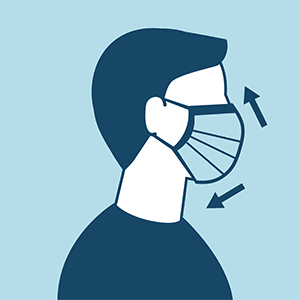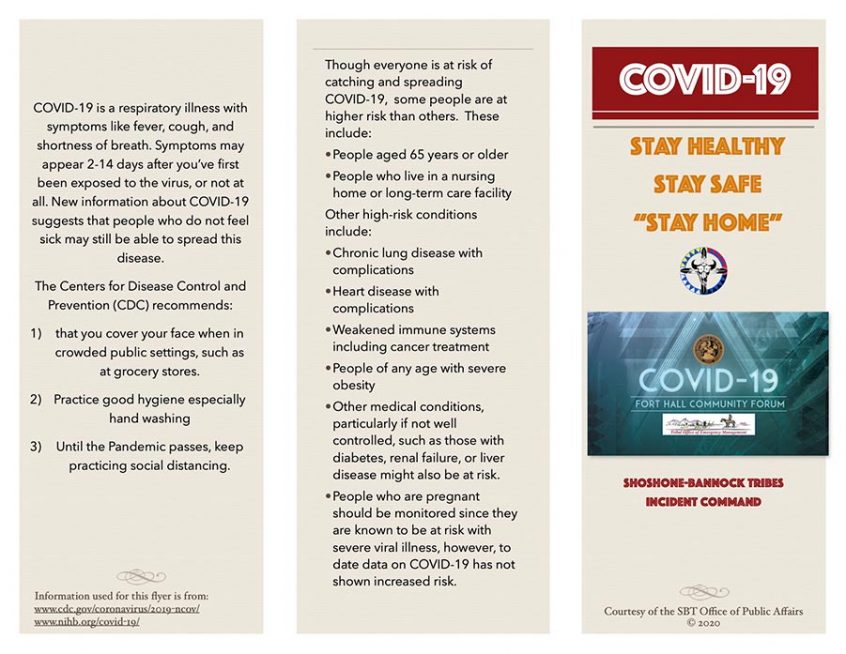
SOCIAL DISTANCING
- Avoid going to public places when possible
- Stay at least 6 feet away from other people when outside of your house
- Stay at home, and away from other people in your household if you feel sick
- Wash your hands often with soap and water, or use alcohol-based hand sanitizer
WEAR A FACEMASK IN PUBLIC
Though voluntary, wearing a facemark decreases the spread of the virus. You can cover your face with any variety of masks, respirators, or cloth face coverings. You can make your cloth face covering from items in your house, including sheets, bandanas, tee shirts, hair-ties, rubber bands, or string.
MAKE YOUR OWN FACE COVERING
Many videos on how to make them are appearing online, as well as free patterns to make your own cloth face coverings.

It is best to use multiple layers of fabric to make a thicker face covering. For more information, or to learn how to make a face covering, visit CDC’s website: cdc.gov/coronavirus/2019-ncov/prevent-getting-sick/ diy-cloth-face-coverings.html
What is COVID-19?
COVID-19 is a respiratory illness with symptoms like fever, cough, and shortness of breath. Symptoms may appear 2-14 days after you’ve first been exposed to the virus, or not at all.
New information about COVID-19 suggests that people who do not feel sick may still be able to spread this disease. The Centers for Disease Control and Prevention (CDC) recommends:
- That you cover your face when in crowded public settings, such as at grocery stores.
- Practice good hygiene especially hand washing
- Until the Pandemic passes, keep practicing social distancing.
Though everyone is at risk of catching and spreading COVID-19, some people are at higher risk than others.
These include:
- People who live in a nursing home or long-term care facility Other high-risk conditions include:
- Chronic lung disease with complications
- Heart disease with complications
- Weakened immune systems including cancer treatment •People of any age with severe obesity
- Other medical conditions, particularly if not well controlled, such as those with diabetes, renal failure, or liver disease might also be at risk.
- People who are pregnant should be monitored since they are known to be at risk with severe viral illness, however, to date data on COVID-19 has not shown increased risk.

